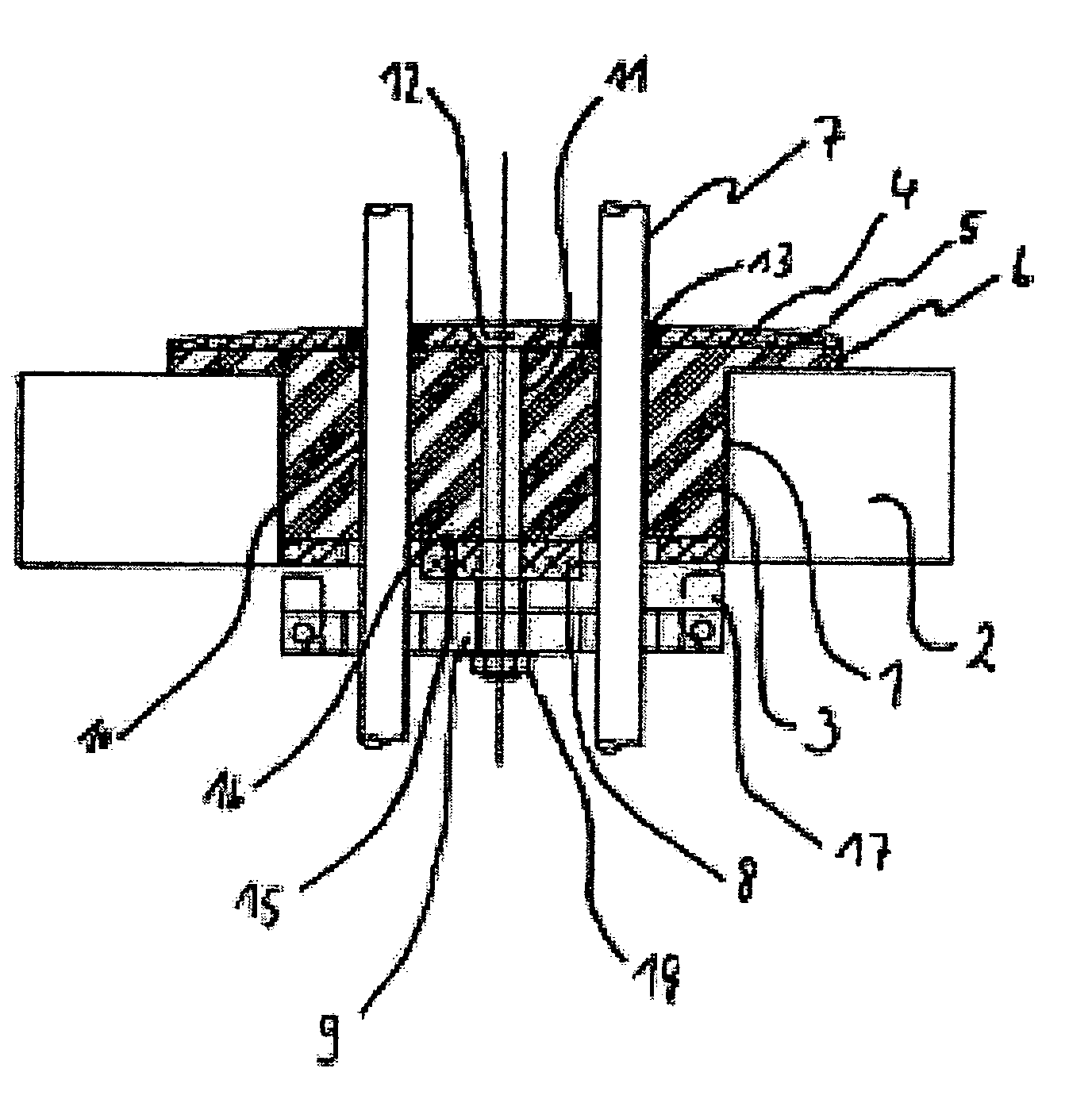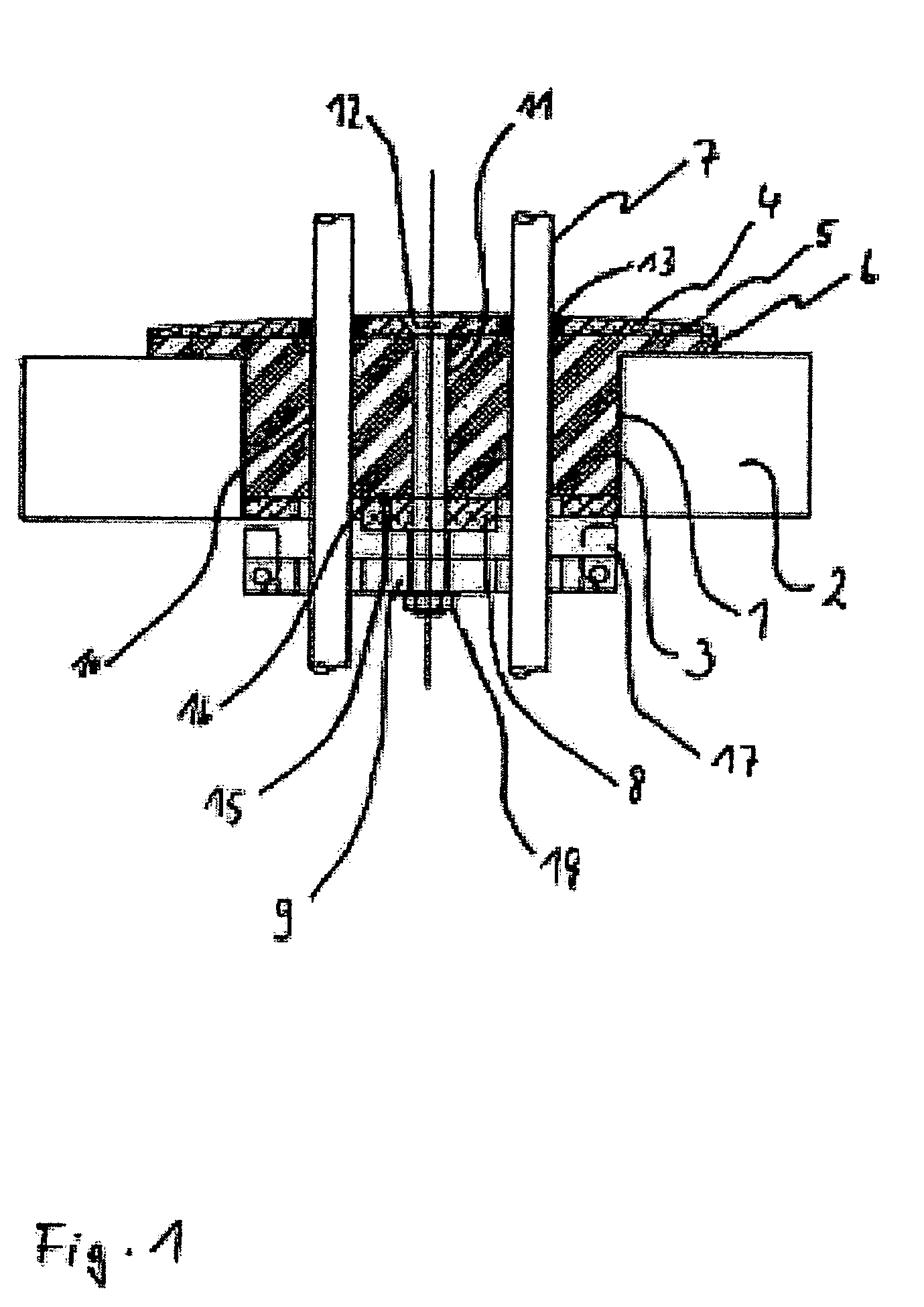Fitting for a liquid-tight cable leadthrough
a technology of liquid-tight cable and leadthrough, which is applied in the direction of cable termination, insulating body, manufacturing tools, etc., to achieve the effects of reducing thickness, simple installation, and uniform transmission of for
- Summary
- Abstract
- Description
- Claims
- Application Information
AI Technical Summary
Benefits of technology
Problems solved by technology
Method used
Image
Examples
Embodiment Construction
[0019]FIG. 1 shows an uninstalled fitting according to the invention that, which is completely inserted into an opening 1 for installing a cable leadthrough in a solid surface 2, which solid surface can be gripped from the back. The opening 1 is realized in the form of a bore in the floor of an on-board kitchen in an aircraft. A largely cylindrical rubber block 3, as an elastic moulded element, is connected with a circular upper boundary plate 4 by vulcanization. The diameter of the section of the rubber block 3 that extends into the bore 1 in the floor of the kitchen is slightly smaller than the diameter of the opening 1. The upper boundary plate 4 has a diameter that is significantly larger than the leadthrough opening 1. Consequently, the edge region of the circular upper boundary plate 4 forms a peripheral support region 5, in which the upper boundary plate 4 can be pressed against the floor. In the contact region with the upper boundary plate 4, the rubber block 3 contains a wi...
PUM
 Login to View More
Login to View More Abstract
Description
Claims
Application Information
 Login to View More
Login to View More - R&D
- Intellectual Property
- Life Sciences
- Materials
- Tech Scout
- Unparalleled Data Quality
- Higher Quality Content
- 60% Fewer Hallucinations
Browse by: Latest US Patents, China's latest patents, Technical Efficacy Thesaurus, Application Domain, Technology Topic, Popular Technical Reports.
© 2025 PatSnap. All rights reserved.Legal|Privacy policy|Modern Slavery Act Transparency Statement|Sitemap|About US| Contact US: help@patsnap.com



